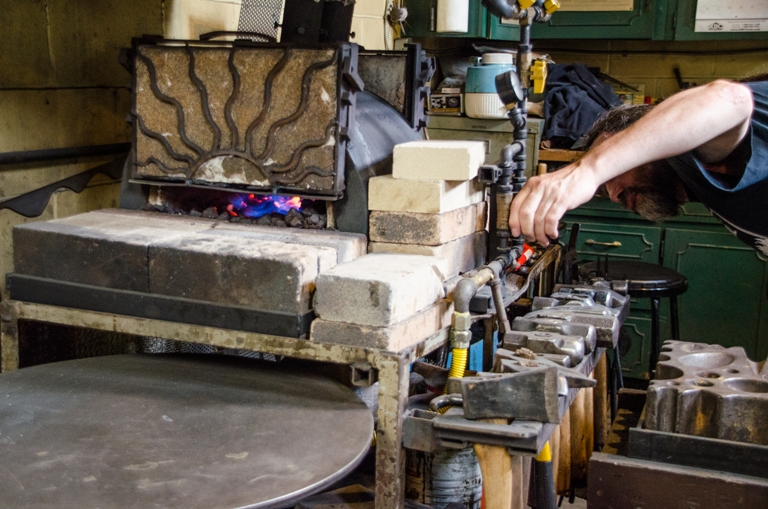by Rukhsar Jaffer
I recently had the pleasure of talking to Graeme Sheffield, a Guelph-based artisan blacksmith who owns and operates The Ironwood Anvil Forge.
Sheffield became interested in blacksmithing at a young age on a trip to a living-history museum where he received a horseshoe-nail ring. When asked about his shift to blacksmithing and how he knew he would be good at the craft, Sheffield explained that he began blacksmithing because of a drive to explore the craft, a drive that he still has today. Although he did not go directly into artisan blacksmithing, he mentioned that he “relied on previous years of metalworking to foster this momentum.”
Prior to his career as an artisan blacksmith, Sheffield spent 18 years building custom automation machinery for robotics. His previous career had a lot to offer. Specifically, he explained, “that training and experience offered me the chance to hone my skills in forming, shaping and assembling some pretty unique items out of metal. I learned about design, drawing, welding and assembly, electronics, project management, project estimating, quoting and customer service.”
The Ironwood Anvil’s name comes from a word that stuck in Sheffield’s head, and rolled off his tongue with ease, when he was starting his business. “Being a person who enjoys canoeing, camping, and being in the outdoors, I thought of drawing from a name associated to it,” he explained. He also pointed out, “The Ironwood tree has the hardest and densest wood of any species in Canada and it’s a tree I happen to like.” Additionally, “Ironwood is also the name given to a very large iron-rich mineral deposit in the Lake Superior region.”
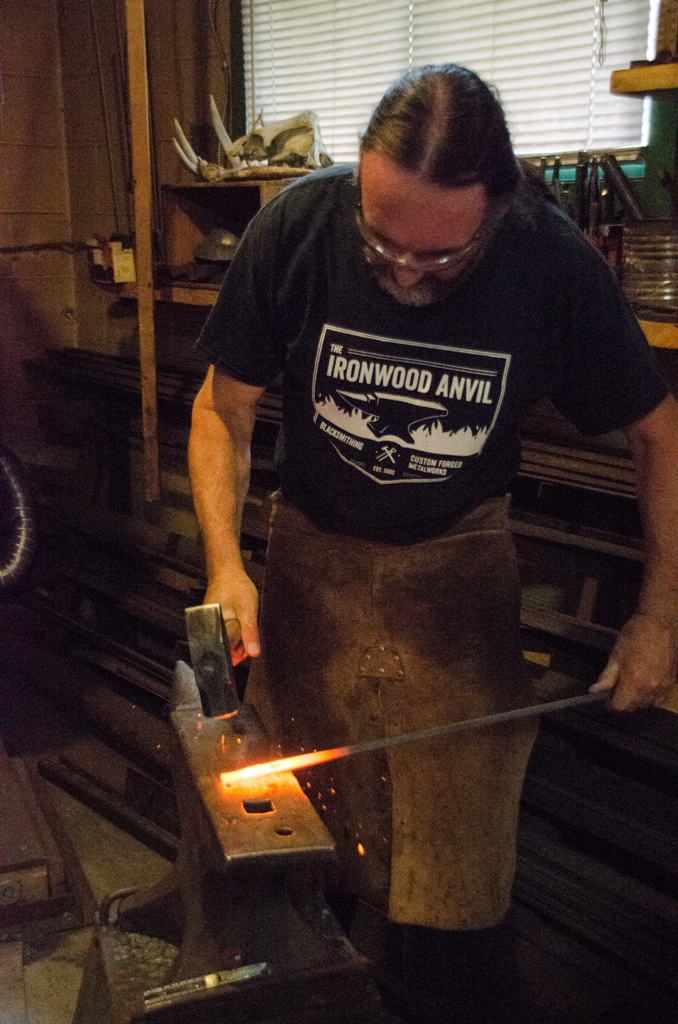
Ironwood is not the only part of Sheffield’s art that draws its inspiration from nature. Many of his designs come from the outdoors. When asked about his creative process and designs, he explained, “I am drawn to the lines, shapes, shadows, and textures of nature, and people seem to really enjoy the fact that I am taking a hard, lifeless, industrial product and forging some life into it, altering its straight lines and giving it a more organic look.” Sheffield has also collaborated with other artists over the years, specifically stained-glass artists and a stone carver.
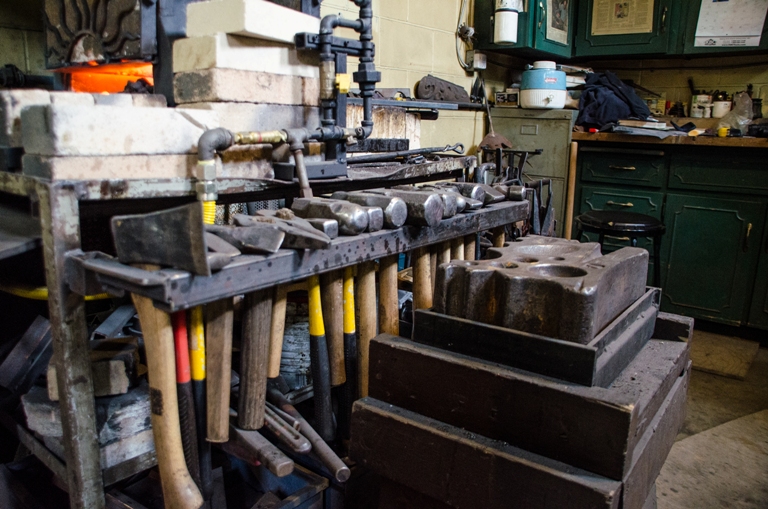
Sheffield has a few other collaborators that he works with on a regular basis. His way of crafting allows his clients to be artists and engage in the artistic process. Many of them play a role in the design of their piece. According to Sheffield, “Some clients are very forward thinking and know what they want.” He also commented that the clients “get the chance to really personalize their project and interact with the ideas that I present.”
Sheffield usually begins and works on his pieces from drawings. “It helps to visualize what I’ll be doing at the anvil,” he remarked. Sheffield commented on the time sensitivity of the procedure, highlighting the importance of a drawing or a plan. “When the steel comes out of the forge it’s around 1200 degrees. You have to know what you’re going to do and strike while the iron is hot!” he warned.
The nature of the procedure is not only important to the design of the final piece but also has health implications. Sheffield describes some of these risks, how they might occur, and precautions one can take. “Cuts, bruises, burns, or crash injuries can happen in the blink of an eye if you’re tired or not paying attention. Safety boots, glasses, gloves, ear muffs, dust masks, respirator, welding helmet, long pants, and long sleeved shirts are all items that have to be worn at the appropriate times,” he shared.
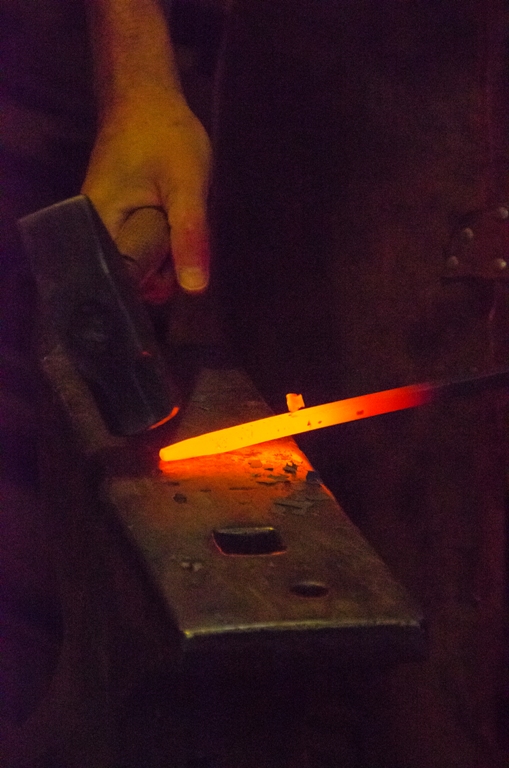
When asked to comment on the future of blacksmithing, and perhaps its characterization as a vanishing form of art, specifically among youth, Sheffield’s response was both surprising and enlightening. “I don’t believe blacksmithing is fading. Blacksmithing has gone through a few renaissances over the years. With the dawning of the industrial age, the role of the blacksmith became more largely an artisanal one. There are, however, some very talented and specialized smiths working now too, such as knife makers, armourers and those that repair or reproduce historical pieces.” Sheffield has taught numerous students and believes, “The younger generation has quite a fascination for blacksmithing.” After all, “Just like in the days of old, it’s important to have at least one metal worker in your community!” he exclaimed.
Although Sheffield is not a farrier (also known as a horseshoe blacksmith), I asked about his belief in the luck of a horseshoe, particularly given his story about the horseshoe-nail ring from his childhood. He mused, “If I said yes, that might imply that I am superstitious.” He went on to describe the various stories and superstitions associated with both horseshoes and blacksmiths, for example, “There are a lot of old stories about the luck of the horseshoe, including: ends pointing up collects good luck, ends pointing down over your door will shower you with good luck as you pass under it.” Finally he admitted, “If I were to hang a horseshoe over my door, it would be with the ends pointing down.”
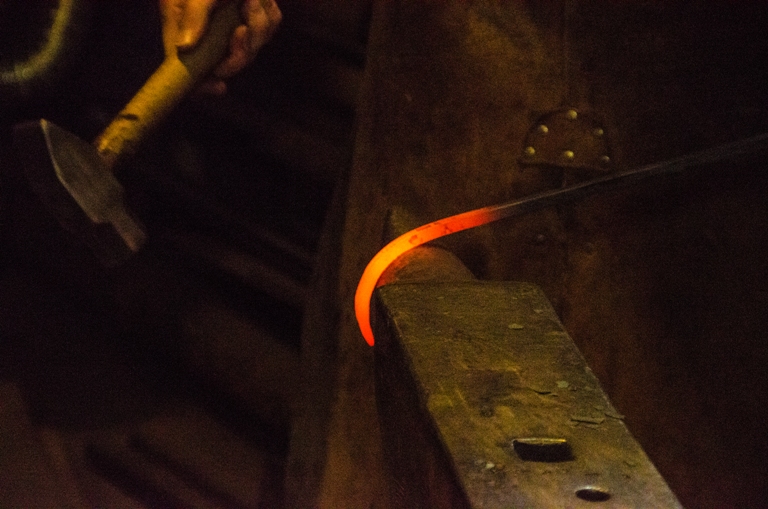
Sheffield shares that Guelph has played a large part in his ability to work on his craft on a full-time basis. “I love the fact that so many people enjoy what I do and want a piece of my work!” he expressed.
You can meet the Ironman Guelph loves at this year’s annual Art on the Street exhibition and sale, to be held on July 16 in Downtown Guelph. The Ironwood Anvil will be stationed at booth # 13. Drop by and check out his amazing work!
Find out more about The Ironwood Anvil here.
Photos by: Rukhsar Jaffer Photography
